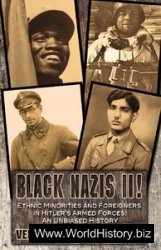After the successes of E1 Alamein and Torch, in December 1942 Colonel Bevan travelled to the United States to make arrangements for the long-term cooperation between the Allies in deception planning. As a result of this visit it was agreed that the LCS would control deception in Europe, North Africa, the Middle East and India, while the American Joint Security Control would be responsible for the Western Hemisphere including Canada, the Pacific, Australia, New Zealand and China.
Although the Middle East and North Africa remained the sole preserve of A Force, organizational changes were required to keep up with developments in the war. With the entry of America and the arrival of General Eisenhower in North Africa, the weight of command had shifted from Cairo to Algiers. This posed A Force some trouble as its spidery links were mostly based on channels built up with contacts in the Egyptian capital.
To protect these channels and maintain a credible threat against the eastern Mediterranean, A Force left its main HQ in Cairo. In Algiers A Force set up an ‘Advanced HQ’ working directly for Eisenhower. It was put under the dual command of Colonel Goldbranson of the United States Army and Lieutenant Colonel Michael Crichton. Already known to Dudley Clarke before the war, Crichton had been recruited into A Force from a staff position with the 7th Armoured Division. There was good news for Lieutenant Colonel David Strangeways when he was rescued from his earlier posting to PAIFORCE in order to run A Force’s new ‘Tactical HQ’, which was posted with General Alexander. Finally a ‘Rear HQ’ was set up in Nairobi for maintaining A Force’s channels in East and South Africa.
A Force’s deceptive web now extended from Cairo to representatives in Algeria, in Nairobi and Kilindini in Kenya, in Cape Town, in Khartoum, with the Eighth and Ninth Army HQs, and with XXV Corps HQ in Cyprus. There were also five ‘special correspondents’ stationed variously in Turkey (at Ankara and Istanbul), in Portuguese East Africa (Lourenpo Marques), in Asmara in Eritrea and on Malta.
In December 1942 Dudley Clarke received authorization to set up a series
Of regional double cross committees in Cairo, Beirut and other places. Known as ‘Thirty’ Committees, each had three members: a representative of A Force who took the chair, an MI6 officer acting as secretary, and a member of SIME. Policy was set by A Force, who supplied the text of the messages to be relayed by the various agents. SIME provided the case officers and MI6 provided the ciphers, funding and controlled agents outside areas of Allied control. By the end of the war there were 21 of these committees (numbered 30, 31, 32 etc) at work in various parts of the world, running agents who were perhaps even more exotic than their counterparts controlled by theTwenty Committee in London.
The prime double agent source in Cairo was known as Cheese after the founding member who arrived in 1941. Since Cheese’s return to Italy the case had passed to his sub-agent, the notional White Russian Paul Nicossof, codenamed Lambert. Subordinate to Lambert were a number of equally notional informants, including his fiery girlfriend Misanthrope and the Afrikaner Piet.
In the Levant, there were a number of star players who assisted with the ongoing false order of battle build up codenamed Cascade. Strategically poised near to the Aegean Sea, these agents also played the important role of pinning down German troops in Greece and the Balkans by suggesting a long-term threat of invasion through the region and a link up with Soviet forces through the Balkans. Controlled by the Thirty-One Committee in Beirut, the two most important double agent networks were assigned the codenames Quicksilver and the Pessimists.
Quicksilver was a Greek Air Force flight lieutenant wireless operator who accepted an offer to spy for the Abwehr as a chance to go over to the British. He was given two assistants. The first was Rio, a brutal thug hired by the Gestapo as ‘local muscle’ and then sacked for his overzealous interrogation techniques. With a knife in the ribs waiting for him if he ever walked the streets of Athens again, Rio volunteered to join Quicksilvers espionage mission. The second recruit was codenamed Gala, politely described as a ‘secretary’ but in fact the former mistress of an Italian intelligence officer who wanted to offload her somewhere distant and preferably dangerous. It was thought that Gala would find no end of work in the Middle East and would be able to fund the expedition from her immoral earnings.
The British security services were forewarned by ISOS that three agents had set out from Greece bound for Syria and the party was duly picked up in a small boat off Latakia. While Quicksilver was whisked away for double cross work, the two stooges were locked up and allowed only a notional existence in the world beyond their prison bars. Thus the thuggish Rio ostensibly joined the Hellenic Navy and served on board a destroyer, while Gala set herself up
As a high-class prostitute in Beirut, mixing with British officers and showing additional favour to those who provided her with information.1
Quicksilver, or ‘George’ as he was informally known by his controllers, was set up in a house in Beirut guarded by a company of East Africans whom Mure described as speaking ‘no known language’. For company the Greek officer shared the house with the other great Levantine performer, one of the previously mentioned Pessimists.
The origin of this second Beirut star can be traced to the summer of 1942 just after Lambert sparked off the bogus Crete invasion scare. Three Greeks were intercepted in northern Syria, having landed by boat. The captives became known in British intelligence circles as the Pessimists. It is believed that the chief, codenamed Pessimist C, was bringing money to Lambert when he was captured. Pessimist C had previously been in contact with MI6 in Athens and there is a theory that he did a deal and agreed to work for SIME in exchange for a large percentage of the cash he had been carrying. His two companions, Costa and Basile (Pessimists B and Zrespectively), were deemed undesirable and were thrown in jail — although, as in the Quicksilver case, they were notionally left at large in order to supply their chief with information to send back to Sofia by wireless. Pessimist C was known to the Germans as Mimi (short for Demetrios) and by the British as ‘Jack’, as in the phrase ‘I’m all right, Jack.’2 Mure described him as a fat, oily slob, while his A Force case officer described him as ‘a greedy devious shit and a stirrer’. Notionally stationed in Damascus, but in reality lodged in respectable comfort with Quicksilver in Beirut, ‘Jack’ was nevertheless a brilliant double cross agent, albeit one who strained the nerves of those in his direct vicinity.
The Thirty-One Committee (Beirut) also ran several purely notional agents who were the brainchild of MI6 officer Michael Ionides, whom Mure believed was the same man who facilitated Cheese’s passage from Istanbul to Cairo in 1941. The first of these agents was Humble — a notional source of information that was passed to the Axis through a Turkish customs official known as Smooth. This official had got himself into debt and was bailed out by MI6 in return for a favour. As far as Smooth or anyone else knew, all he had to do was deliver the occasional letter to an Abwehr contact, and ask no questions. The background story for Humble was that he ran a grocery in Aleppo and was contracted to provide fruit and vegetables to British Army camps. Ostensibly perched at the entrance to his shop smoking a hookah, Humble became an excellent channel to promote A Force lies.
Ionides’ other fictional masterpiece was Alert. Supposedly employed as a civilian orderly in an Army HQ in northern Syria, Alert was said to be the
Bastard son of an Australian sergeant-major who had raped his mother in World War I. Unsurprisingly Alert was anti-British and sent his letters to the Germans via Crude, a British double agent who was supposedly an Abwehr informant working as a janitor in the British consulate in Istanbul.3
Switching between the control of Thirty-One and the Thirty-Three Committee in Cyprus, two other groups of agents are worthy of note. The Savages were an Abwehr team of three intercepted on their arrival in Cyprus in July. While his companions were thrown into prison, Savage I reported to his German controllers that he had moved to Cairo with his wireless transmitter set and had obtained employment in the Allied Liaison Branch of GHQ.4 More worthy still were the Lemons. A Greek sailor, Little Lemon was named thus for his visual resemblance to that fruit. His hair was white and his skin complexion was a pale yellow. Little Lemon was accompanied by his companion Big Lemon, who was a Greek Cypriot and part of Enosis, the movement wishing to bring about the union of Greece and Cyprus. Their original destination had been Syria, but they were captured by the British when the skipper of their boat lost his nerve and took them to Cyprus instead. Operating out of Nicosia, Little Lemon’s early messages were filled with his fear that he had contracted syphilis. Little Lemon had in fact contracted VD almost as soon as he arrived and was experiencing considerable discomfort. His principal informants were a string of girls from Axis countries who had been interned by the British. These had been released from detention to work as cabaret dancers for the enjoyment of Allied officers based in Nicosia. The girls were real enough, but each was given a notional alter-ego: the Austrians Helga and Trudi, Gabbi the Hungarian, Marki the Bulgarian and two Romanians, Maria and the aptly named Swing-Tit. While the real dancing girls performed their routines, their notional counterparts fed Little Lemon tasty morsels of information picked up and overheard from the Allied officers in the club.
Moving further afield, it was important that wherever the Germans had a listening post, there would be some organization in place to deceive it. At the beginning of the war the Abwehr maintained a station in Kabul from where it could monitor British and Soviet activities in the region. In 1943 an excellent channel was opened up to feed this station with deceptive material by the recruitment of a Hindu codenamed Silver. Guy Liddell described Silver as the ‘only valuable double cross case’ in the region.5
Bhagat Ram Talwar was a communist activist and had helped the antiBritish politician Subhas Chandra Bose escape from Delhi to Berlin in 1941. After the German invasion of Russia, Talwar was found in Kabul. Now that Britain and Russia were allies, his services were offered to Peter Fleming’s
GSI(d) Division in India. Codenamed Silver, he returned to Kabul in January 1943 posing as the head of a notional body called the All India Revolutionary Committee. Silver claimed that this organization had branches all across the sub-continent, providing him an excellent network of informers and spies. In fact all the information was provided by Fleming’s organization in the hope that the Germans would pass it on to Berlin and that it would be relayed to Tokyo.
Silver was one of the more colourful spies at work during World War II. At one point he was seen in Delhi in the company of British officers by an Afghan who knew him in Kabul. The British feared Silver would be blown and advised him not to travel back to Afghanistan. Silver disagreed and went back. He found the man who could identify him and arranged to have dinner with him. Before the meal, Silver laced the Afghan’s curry with a deadly dose of poisonous chopped tiger whiskers.6




 World History
World History









